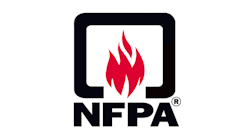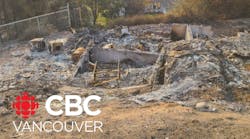Last week, we made a presentation at the Arizona Fire Chiefs Association/Arizona Fire District Chiefs Association conference. Our task was to explain the Clean Concept for Fire Stations. Not only for the design and construction of stations but also for guidelines to adapt current fire stations.
My co-presenter was Tom Cole, operations and logistical chief (Ret.) Goodyear, AZ, Fire Department. The latest Goodyear fire station design is based on his team’s research and Cole’s attendance at the Station Design Conference in Fort Worth a couple of years ago.
We explained how the concept of a clean fire station is the accumulation of efforts from over 15 years and research to make fire stations safer and healthier for firefighters.
The clean fire station encompasses efforts beginning in the late ‘90s with the introduction of designated fitness rooms; 2002 promoting seatbelts; 2008 removing turnout gear from apparatus bays; 2009 improving air quality; 2015 Hot Zone design protocols and steps to restrict cancer-causing carcinogens in the living areas of the fire station. The latest focus is on firefighters and mental health in fire stations.
As the staggering numbers of firefighters—and I include EMS personnel and EVTs—with cancer and lung-related diseases continues to increase, the focus on the protection of all first responders is a critical priority.
Last month, in Lyon, France, the International Agency for Research on Cancer (IARC), the cancer agency of the World Health Organization (WHO), announced, “After thoroughly reviewing the available scientific literature, the Working Group classified occupational exposure as a firefighter as ‘carcinogenic to humans’… Occupational exposure as a firefighter causes cancer.”
During the presentation, Tom and I shared the Five Steps to a Clean Station, compiled from presentations at the Station Design Conference and architects who specialize in public safety facilities. The following steps are important to new public safety designs, but most can also be adapted to existing fire stations.
Five steps to a clean fire station:
1) Read and learn about cancer-causing carcinogens in fire stations.
a. Sources and Exposure
b. Contamination
c. Transfer to the Station
d. Cross contamination within the station
2) Review the Hot Zone design plan and apply it to existing zones in your station
a. Apparatus Bays – clean cabs, tools, and equipment storage areas; no food or ice machines in the bays
b. Transitional areas – decon and cleaning areas; walk-off mats; closed doors; hand sinks and boot wash stations; airlocks and vestibules
c. Living areas – limit turnout gear; fully separated from apparatus/equipment areas; confine workout and exercise areas to living area (isolate from the bays)
3) Examine decontamination procedures for personnel returning from incidents.
a. Bag turnout gear
b. Shower within an hour
c. Clean uniforms
d. Hand, face and neck washing
e. Exhaust control systems
4) Consider healthy ‘green’ elements in the station
a. Natural materials
b. Visual interest and richness
c. Organic shapes, forms and artwork
5) Focus on the physical and mental health of personnel
a. Natural lighting
b. Views of the exterior
c. Outdoor activity areas
d. Practice good sleep hygiene
Further information about most of the steps and subcategories can be found in articles on Firehouse.com, FEMA, NFPA, Firefighter Cancer Support Network, other fire media outlets, and even Google. Or contact me for the sources.
One slide we shared during our presentation that had a visible reaction from the attendees, was the quote from the IAFF: “From 2015 to 2020, 75% of the firefighters added to the IAFF Fallen Firefighters Memorial died from occupational cancer.”
The same petroleum-based chemicals and per- and poly-fluoroalkyl substances (PFAS) (Fluoropolymer coatings can be in a variety of products) that are causing fires to burn hotter and faster and reducing escape time for inhabitants are the very same chemicals that cling to firefighters’ turnout gear, equipment, and fire apparatus, and cause cancer in firefighters. Please educate, and act to reduce and prevent.








